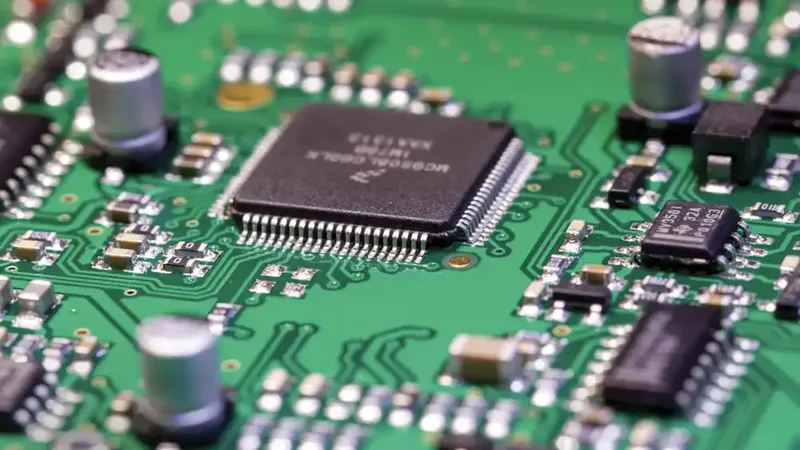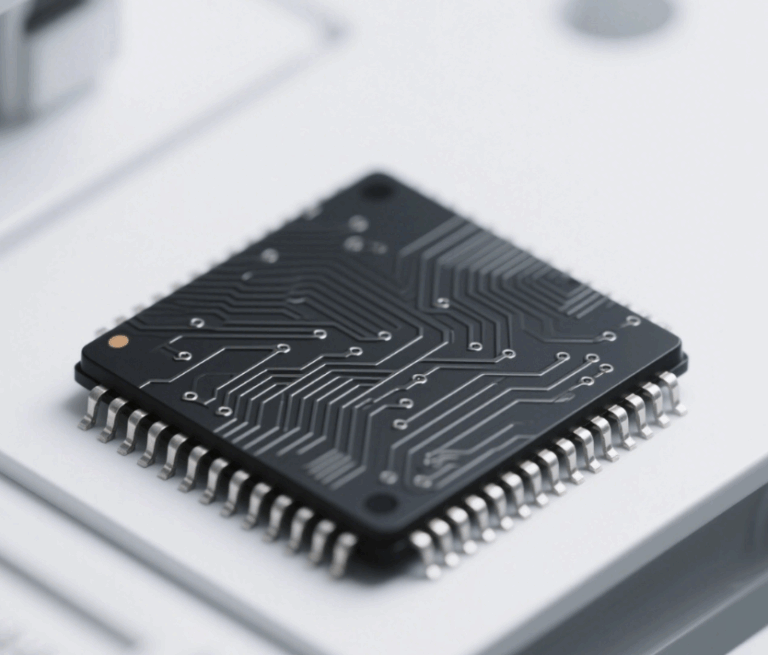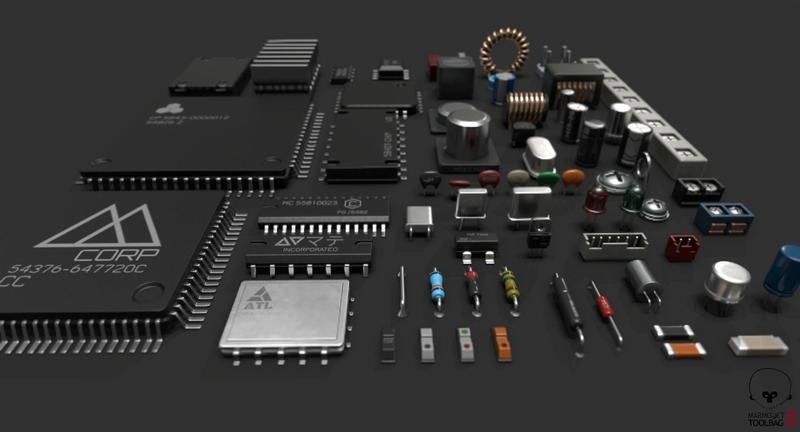1. Key nodes and risk prevention in the procurement process
The procurement of electronic components is a dual game of technology and business, which requires full control from demand definition to delivery acceptance. The following are the precautions for the core process:
Demand definition and BOM review
Precision of technical parameters: clarify the electrical characteristics (such as voltage, current, frequency), packaging form (such as SOP, QFN) and environmental requirements (such as operating temperature range) of components. Avoid procurement errors caused by model suffixes or packaging differences. For example, 1N4148WS has multiple packaging forms such as SOD-123 and 1206, which need to be clearly marked in the order.
BOM standardization management: Establish an enterprise-level material coding system, and work with the R&D department to review the BOM list, exclude discontinued models (such as TI’s LM324 has been replaced by multiple brands) and non-preferred supplier products to reduce the risk of later replacement.
Supplier screening and negotiation strategy
In-depth qualification verification: Require suppliers to provide ISO 9001 certification, RoHS test reports and original factory authorization documents. For automotive-grade components, additional verification of AEC-Q200 certification is required. For example, Sunlord Electronics’ automotive-grade inductors have passed Tesla’s supply chain audit.
Price negotiation skills: Use the “integrate into whole” strategy to integrate scattered procurement needs, or narrow price differences through “difference sharing”. For example, a company successfully reduced its overall procurement costs by 12% by centralized procurement of multiple categories. At the same time, suppliers are required to provide credit support (such as 60-day payment) to optimize cash flow.
Order execution and logistics tracking
Refinement of contract terms: Clearly specify the delivery date (such as ±3 days floating range), quality assurance (such as a ten-fold compensation clause for fakes) and breach of contract liability in the procurement contract. For urgent orders, a “green channel” can be agreed upon for priority processing, such as Anjida Electronics’ promise that conventional models will arrive the next day.
Visual logistics management: Use intelligent warehousing systems such as SAP to track order status in real time, or obtain cargo location information through third-party logistics platforms. For high-value components, it is recommended to purchase transportation insurance to avoid cargo damage risks.
Quality inspection and after-sales guarantee
Multi-level quality inspection system:
IQC incoming material inspection: Perform appearance inspection, dimension measurement and electrical parameter testing on each batch of goods, such as using LCR bridge to detect capacitor capacity.
FAE on-site verification: The technical team needs to conduct small-batch trial production on the production line to verify the compatibility of components and circuit boards.
Third-party testing: Entrust professional organizations (such as SGS) to conduct reliability tests, including high and low temperature shock, vibration tests, etc.
Return and exchange mechanism: Agree with suppliers to unconditionally return and exchange within 30 days, and require the provision of spare inventory to deal with sudden quality problems.
2. Common traps and avoidance solutions for platform procurement
Current mainstream B2B platforms (such as Alibaba International Station) provide convenience, but there are significant defects:
Inflated prices and hidden costs
Platform handling fees: Alibaba International Station charges a transaction service fee of 1%-2% for non-One-Click orders, and a bank handling fee of US15pertransactionisrequiredforcashwithdrawal.Takinga15 per transaction is required for cash withdrawal. Taking a 15pertransactionisrequiredforcashwithdrawal.Takinga100,000 order as an example, the comprehensive cost increases by about US$2,150.
Logistics premium: The prices of logistics service providers recommended by the platform are generally 20%-30% higher than the market price, and the transportation time is unstable.
Fake risks and rights protection dilemma
Refurbished materials are rampant: The price of refurbished chips on the market is only 1/3 of the original materials. Some unscrupulous merchants print domestic MCUs with ST, TI and other brands to pretend to be genuine products. For example, a smart wearable company purchased counterfeit Bluetooth chips, which resulted in a batch of product returns, with direct losses exceeding one million yuan.
Difficulty in after-sales accountability: The platform dispute handling cycle is long (average 15-30 days), and there is a lack of effective quality traceability mechanism, so companies are often forced to bear the losses themselves.
Lack of technical support
Most platform suppliers are traders and lack FAE team support. An industrial equipment manufacturer delayed product development by 2 months because it did not obtain the driver code of the ADC chip.
3. Direct connection with the core advantages of HK EQGOO LIMITED
As a professional supplier in the field of electronic components, HK EQGOO LIMITED provides customers with full-link value through vertical integration of the supply chain:
Price advantage and flexible cooperation
Original factory direct procurement model: Establish strategic cooperation with domestic manufacturers such as Fenghua Hi-Tech and Zhaoqing Emerald, skip the middle link, and the price of passive components such as resistors and capacitors is 30%-50% lower than the platform.
Small batch friendly policy: Support 100 pieces of minimum order, provide free samples (delivery within 3-5 working days), and dynamically adjust discounts according to order volume, for example, orders of more than 10K pieces can enjoy an additional 5% discount.
Quality control and certification endorsement
Full process quality control system:
Warehouse inspection: Use X-Ray equipment to detect the internal solder joints of the chip to eliminate empty solder joints and false solder joints.
Batch traceability: Each batch of goods is accompanied by a unique QR code, which can be used to query the production batch, test report and original factory shipment record.
Compliance guarantee: All products are RoHS and REACH certified, and automotive-grade components meet the AEC-Q200 standard. We have supplied millions of inductor components to a new energy vehicle manufacturer without quality accidents.
Technical service and supply chain resilience
Professional FAE team: More than 50% of employees have an electronic engineering background. They have completed low-power Bluetooth solution adaptation for smart home customers within 24 hours, helping the product to be launched one month ahead of schedule.
Emergency response mechanism: Establish dual warehouse inventory in Shenzhen and Hong Kong (1 billion pieces of stock are always available), and emergency orders can start “4-hour express delivery”. In 2024, a medical equipment manufacturer’s supply chain was interrupted due to the epidemic. HK EQGOO LIMITED completed the emergency transfer of 100,000 MCUs within 72 hours.

Cost optimization and long-term value
Flexible payment period: Provide 30-90 days of payment period based on customer credit rating to alleviate the financial pressure of small and medium-sized enterprises.
Domestic substitution support: Assist customers to complete domestic component verification, such as replacing TI products with Shengbang Microelectronics’ operational amplifiers, reducing costs by 40% and maintaining consistent performance parameters.
IV. Practical guide for efficient docking with HK EQGOO LIMITED
Cooperation process and tools
Demand submission: Submit the BOM list through the official website or email ([email protected]), marking the component model, quantity and special requirements (such as environmental protection level).
Plan review: The HK EQGOO LIMITED technical team will provide feedback on alternative solutions and quotations within 2 working days, and provide component specifications, test reports and packaging drawings.
Order execution: After confirming the order, the production progress is viewed in real time through the ERP system, and the logistics status is updated to the customer’s backend simultaneously.
Risk avoidance and protection
Contract terms: Sign a formal contract including quality assurance, intellectual property protection and confidentiality agreement to clarify the rights and responsibilities of both parties.
Dispute resolution: Commit to respond to after-sales issues within 2 hours and provide solutions within 48 hours.
V. Summary
The procurement of electronic components needs to seek a balance between quality, cost and efficiency. By following standardized processes, avoiding platform procurement traps, and directly connecting with vertical suppliers such as HK EQGOO LIMITED, companies can achieve:
Cost optimization: procurement costs are reduced by 20%-40%, and hidden risks are greatly reduced;
Supply chain resilience: emergency delivery capabilities are increased by 300% to ensure production continuity;
Technical collaboration: obtain full-cycle technical support from selection to mass production to accelerate product launch.
In the future, with the acceleration of domestic substitution and technological iteration, suppliers with supply chain integration capabilities and technical service genes will become the core strategic partners of electronic manufacturing companies. It is recommended that companies establish a two-tier procurement system of “original factory + core supplier”, deeply bind with high-quality suppliers such as HK EQGOO LIMITED in key areas, and build a sustainable supply chain ecosystem.



